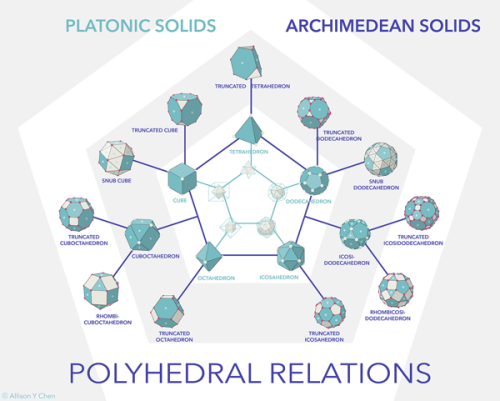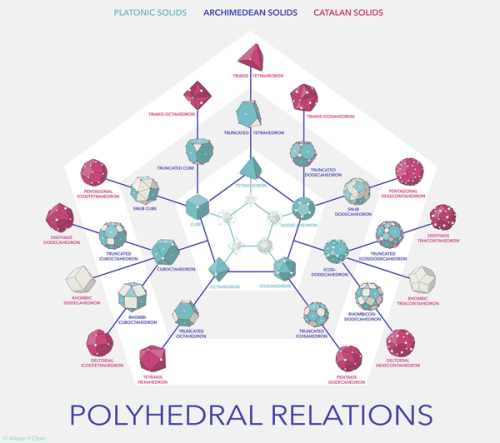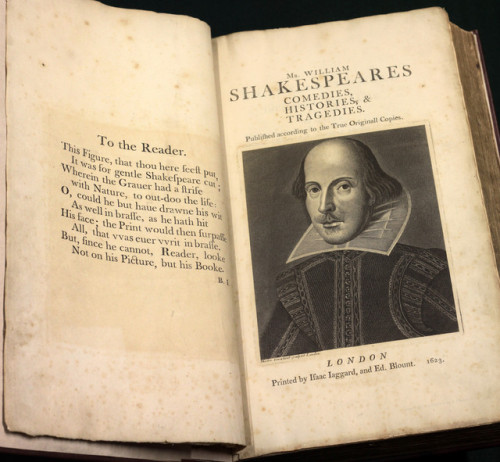March 24th 1944: The ‘Great Escape’


March 24th 1944: The ‘Great Escape’
On this day in 1944, a group of Allied prisoners of war staged a daring escape attempt from the German prisoner of war camp at Stalag Luft III. This camp, located in what is now Poland, held captured Allied pilots mostly from Britain and the United States. In 1943, an Escape Committee under the leadership of Squadron Leader Roger Bushell of the RAF, supervised prisoners surreptitiously digging three 30 foot tunnels out of the camp, which they nicknamed ‘Tom’, ‘Dick’ and ‘Harry’. The tunnels led to woods beyond the camp and were remarkably sophisticated - lined with wood, and equipped with rudimentary ventilation and electric lighting. The successful construction of the tunnels was particularly impressive as the Stalag Luft III camp was designed to make it extremely difficult to tunnel out as the barracks were raised and the area had a sandy subsoil. ‘Tom’ was discovered by the Germans in September 1943, and ‘Dick’ was abandoned to be used as a dirt depository, leaving ‘Harry’ as the prisoners’ only hope. By the time of the escape, American prisoners who had assisted in tunneling had been relocated to a different compound, making the escapeees mostly British and Commonwealth citizens. 200 airmen had planned to make their escape through the ‘Harry’ tunnel, but on the night of March 24th 1944, only 76 managed to escape the camp before they were discovered by the guards. However, only three of the escapees - Norwegians Per Bergsland and Jens Müller and Dutchman Bram van der Stok - found their freedom. The remaining 73 were recaptured, and 50 of them, including Bushell, were executed by the Gestapo on Adolf Hitler’s orders, while the rest were sent to other camps. While the escape was generally a failure, it helped boost morale among prisoners of war, and has become enshrined in popular memory due to its fictionalised depiction in the 1963 film The Great Escape.
“Three bloody deep, bloody long tunnels will be dug – Tom, Dick, and Harry. One will succeed!” - Roger Bushell
More Posts from Philosophical-amoeba and Others


Dau lun o weithwyr G P Lloyd & Co, Dumballs Rd, Caerdydd, gwneuthurwyr coesau pren i offer, c. 1930, ond beth yw'r gwahaniaeth rhwng y ddau?
-
Two photos of workers at G P Lloyd & Co, Dumballs Road, Cardiff, manufacturers of wooden tool handles, c. 1930. Can you spot the difference?
From the archives at St Fagans National Museum of History.

I just completed the finishing touches on my new poster, a detailed map of the Mandelbrot Set in a vintage style. I’m calling it the Mandelmap.
The Mandelbrot Set is a fractal shape with infinite detail that you can zoom in on. I often explore the Mandelbrot Set to find trippy patterns to create gifs with, but when I started I felt like I was just poking around at random. So I wanted to create a printed guide for myself to find my way around… I soon realized this was going to be a lot of work, so I decided I might as well take it to the next level and make an awesome poster that would be not just for myself but for everyone else to enjoy too.
What you see here is the result of more than a year’s research, planning, and execution. It’s a 36x24 inch poster rendered fully at 300 dpi, and everything you see was created from scratch. I will be posting more updates and information as I get the test prints in, and I hope to have this poster available to buy within the next couple months!
www.mandelmap.com



Platonic solid: In Euclidean geometry, a Platonic solid is a regular, convex polyhedron with congruent faces of regular polygons and the same number of faces meeting at each vertex. Five solids meet those criteria, and each is named after its number of faces.
An Archimedean solid is a highly symmetric, semi-regular convex polyhedron composed of two or more types of regular polygons meeting in identical vertices . They are distinct from the Platonic soilds, which are composed of only one type of polygon meeting in identical vertices, and from the Johnson solids, whose regular polygonal faces do not meet in identical vertices.
In mathematics, a Catalan solid, or Archimedean dual, is a dual polyhedron to an Archimedean soild. The Catalan solids are named for the Belgian mathematician, Eugène Catalan, who first described them in 1865.
The Catalan solids are all convex. They are face-transitive but not vertex-transitive. This is because the dual Archimedean solids are vertex-transitive and not face-transitive. Note that unlike Platonic soilds and Archimedean soild, the faces of Catalan solids are not regular polygons. However, the vertex figures of Catalan solids are regular, and they have constant dihedral angles. Additionally, two of the Catalan solids are edge-transitive: the rhombic dodecahedron and the rhombic triacontahedron. These are the duals of the two quasi-regular Archimedean solids.
Images: Polyhedral Relations by Allison Chen on Behance.









Japan’s annual Wara Art Festival (previously featured here), one of our favorite signs that autumn has returned, is now underway at Uwasekigata Park. “Wara” is the Japanese term for rice straw. It’s what remains after the rice harvest. Some regions use it to feed livestock or improve the soil. But in Niigata Prefecture it’s used to make these enormous sculptures.
The Wara Art Festival all started in 2006 when the local district reached out to Musashino Art University to seek guidance on transforming their abundant amount of rice straw into art. And in 2008, the very first Wara Art Festival was held. Since then, every year the school sends art students up to Niigata to assist in creating sculptures made out of rice straw. The festivities have ended but the sculptures are on display through October 31, 2017.
To mark the 10th anniversary of the Wara Art Festival participants made this year’s sculptures twice as big as usual.

Visit the Wara Art Festival Facebook page for more photos of these magnificent sculptures.
[via My Modern Met and Spoon & Tamago]

Comedies Histories Tragedies
Mr William Shakespeare
London Iaggard and Blount 1623
Textual reprint of the First Folio published by J Wright 1807
Where does the word ‘meme’ come from?

The word meme was originally coined in the 1970s by sociobiologist, Richard Dawkins, from the ancient Greek for imitation.

He used it to describe how ideas and symbols propagate through a culture like genes through a population.

With the advent of the Internet, the process became directly observable in how jokes and images were popularized at lightning speed and soon the word came to refer to a certain kind of image.

So ‘meme’ not only describes how words become part of language, the word is a meme itself. As it turns out, there’s a word for words that describe themselves: ‘autological’.

Spread the word! ;)
From the TED-Ed Lesson Where do new words come from? - Marcel Danesi
Animation by TOGETHER
Oval Eggs
The word egg was a borrowing from Old Norse egg, replacing the native word ey (plural eyren) from Old English ǣġ, plural ǣġru. Like “children” and “kine” (obsolete plural of cow), the plural ending -en was added redundantly to the plural form in Middle English. As with most borrowings from Old Norse, this showed up first in northern dialects of English, and gradually moved southwards, so that for a while, ey and egg were used in different parts of England.
In 1490, when William Caxton printed the first English-language books, he wrote a prologue to his publication of Eneydos (Aeneid in contemporary English) in which he discussed the problems of choosing a dialect to publish in, due to the wide variety of English dialects that existed at the time. This word was a specific example he gave. He told a story about some merchants from London travelling down the Thames and stopping in a village in Kent
And one of theym… cam in to an hows and axed for mete and specyally he axyd after eggys, and the goode wyf answerde that she could speke no Frenshe. And the marchaunt was angry, for he also coude speke no Frenshe, but wolde have hadde egges; and she understode hym not. And thenne at laste a-nother sayd that he wolde have eyren. Then the good wyf sayd that she understod hym wel. Loo, what sholde a man in thyse dayes now wryte, egges, or eyren? Certaynly it is hard to playse every man, by-cause of dyversite and chaunge of langage.
The merchant in this story was only familiar with the word egg, while the woman only knew ey, and the confusion was only resolved by someone who knew both words. Indeed, the woman in the story was so confused by this unfamiliar word egg that she assumed it must be a French word! The word “meat” (or “mete” as Caxton spelled it) was a generic word for “food” at the time.
The word ey may also survive in the term Cockney, thought to derive from the Middle English cocken ey (”cock’s egg”), a term given to a small misshapen egg, and applied by rural people to townspeople
Both egg and ey derived from the same Proto-Germanic root, *ajją, which apparently had a variant *ajjaz in West Germanic. This Proto-Germanic form in turn derived from Proto-Indo-European *h2ōwyóm. In Latin, this root became ōvum, from which the adjective ōvalis meaning “egg-shaped”, was derived. Ōvum itself was borrowed into English in the biological sense of the larger gamete in animals, while ōvalis is the source of oval.
The PIE root is generally though to derive from the root *h2éwis, “bird”, which is the source of Latin avis “bird”, source of English terms such as aviation. This word may also be related to *h2ówis “sheep”, which survived in English as ewe. One theory is that they were both derived from a root meaning something like “to dress”, “to clothe”, with bird meaning “one who is clothed [in feathers]” and sheep meaning “one who clothes [by producing wool]”.
The code that took America's Apollo 11 to the moon in the 1960's has been published

When programmers at the MIT Instrumentation Laboratory set out to develop the flight software for the Apollo 11 space program in the mid-1960s, the necessary technology did not exist. They had to invent it.
They came up with a new way to store computer programs, called “rope memory,” and created a special version of the assembly programming language. Assembly itself is obscure to many of today’s programmers—it’s very difficult to read, intended to be easily understood by computers, not humans. For the Apollo Guidance Computer (AGC), MIT programmers wrote thousands of lines of that esoteric code.
Here’s a very 1960s data visualization of just how much code they wrote—this is Margaret Hamilton, director of software engineering for the project, standing next to a stack of paper containing the software:

The AGC code has been available to the public for quite a while–it was first uploaded by tech researcher Ron Burkey in 2003, after he’d transcribed it from scanned images of the original hardcopies MIT had put online. That is, he manually typed out each line, one by one.
“It was scanned by an airplane pilot named Gary Neff in Colorado,” Burkey said in an email. “MIT got hold of the scans and put them online in the form of page images, which unfortunately had been mutilated in the process to the point of being unreadable in places.” Burkey reconstructed the unreadable parts, he said, using his engineering skills to fill in the blanks.
“Quite a bit later, I managed to get some replacement scans from Gary Neff for the unreadable parts and fortunately found out that the parts I filled in were 100% correct!” he said.
As enormous and successful as Burkey’s project has been, however, the code itself remained somewhat obscure to many of today’s software developers. That was until last Thursday (July 7), when former NASA intern Chris Garry uploaded the software in its entirety to GitHub, the code-sharing site where millions of programmers hang out these days.
Within hours, coders began dissecting the software, particularly looking at the code comments the AGC’s original programmers had written. In programming, comments are plain-English descriptions of what task is being performed at a given point. But as the always-sharp joke detectives in Reddit’s r/ProgrammerHumor section found, many of the comments in the AGC code go beyond boring explanations of the software itself. They’re full of light-hearted jokes and messages, and very 1960s references.
One of the source code files, for example, is called BURN_BABY_BURN--MASTER_IGNITION_ROUTINE, and the opening comments explain why:

About 900 lines into that subroutine, a reader can see the playfulness of the original programming team come through, in the first and last comments in this block of code:

In the file called LUNAR_LANDING_GUIDANCE_EQUATIONS.s, it appears that two lines of code were meant to be temporary ended up being permanent, against the hopes of one programmer:

In the same file, there’s also code that appears to instruct an astronaut to “crank the silly thing around.”

“That code is all about positioning the antenna for the LR (landing radar),” Burkey explained. “I presume that it’s displaying a code to warn the astronaut to reposition it.”
And in the PINBALL_GAME_BUTTONS_AND_LIGHTS.s file, which is described as “the keyboard and display system program … exchanged between the AGC and the computer operator,” there’s a peculiar Shakespeare quote:
This is likely a reference to the AGC programming language itself, as one Reddit user . The language used predetermined “nouns” and “verbs” to execute operations. The verb pointed out 37, for example, means “Run program,” while the noun 33 means “Time to ignition.”
Now that the code is on GitHub, programmers can actually suggest changes and file issues. And, of course, they have
-
 gaia-aviva reblogged this · 3 months ago
gaia-aviva reblogged this · 3 months ago -
 gaia-aviva liked this · 3 months ago
gaia-aviva liked this · 3 months ago -
 ereinii0n reblogged this · 3 months ago
ereinii0n reblogged this · 3 months ago -
 foamrolls liked this · 1 year ago
foamrolls liked this · 1 year ago -
 heckcareoxytwit reblogged this · 1 year ago
heckcareoxytwit reblogged this · 1 year ago -
 fireftr766 liked this · 2 years ago
fireftr766 liked this · 2 years ago -
 shesjustquiet reblogged this · 2 years ago
shesjustquiet reblogged this · 2 years ago -
 henrydeclyde-blog liked this · 2 years ago
henrydeclyde-blog liked this · 2 years ago -
 morningdawnbreaks liked this · 2 years ago
morningdawnbreaks liked this · 2 years ago -
 shesjustquiet reblogged this · 3 years ago
shesjustquiet reblogged this · 3 years ago -
 afk-brb liked this · 3 years ago
afk-brb liked this · 3 years ago -
 wescsa liked this · 3 years ago
wescsa liked this · 3 years ago -
 joviale-60 liked this · 3 years ago
joviale-60 liked this · 3 years ago -
 oxymitch-archive reblogged this · 4 years ago
oxymitch-archive reblogged this · 4 years ago -
 directedby13 reblogged this · 4 years ago
directedby13 reblogged this · 4 years ago -
 enjoy003 reblogged this · 4 years ago
enjoy003 reblogged this · 4 years ago -
 enjoy003 liked this · 4 years ago
enjoy003 liked this · 4 years ago -
 historyofviolence reblogged this · 4 years ago
historyofviolence reblogged this · 4 years ago -
 starstruckcomicsanimeoperator liked this · 4 years ago
starstruckcomicsanimeoperator liked this · 4 years ago -
 allthelove-em liked this · 4 years ago
allthelove-em liked this · 4 years ago -
 cloud-tripper reblogged this · 4 years ago
cloud-tripper reblogged this · 4 years ago -
 andizzz liked this · 4 years ago
andizzz liked this · 4 years ago -
 bea294639102 reblogged this · 4 years ago
bea294639102 reblogged this · 4 years ago -
 wwhistorian reblogged this · 4 years ago
wwhistorian reblogged this · 4 years ago -
 irilylil liked this · 4 years ago
irilylil liked this · 4 years ago -
 osito-obsucuro-blog liked this · 4 years ago
osito-obsucuro-blog liked this · 4 years ago -
 wwhistorian liked this · 4 years ago
wwhistorian liked this · 4 years ago -
 burningdonkeyfreakspy liked this · 4 years ago
burningdonkeyfreakspy liked this · 4 years ago -
 paulinedorchester liked this · 4 years ago
paulinedorchester liked this · 4 years ago -
 rvch86 liked this · 4 years ago
rvch86 liked this · 4 years ago -
 anon-104 liked this · 4 years ago
anon-104 liked this · 4 years ago -
 somewhere-at-sea reblogged this · 4 years ago
somewhere-at-sea reblogged this · 4 years ago -
 dermemejaeger liked this · 4 years ago
dermemejaeger liked this · 4 years ago -
 nativeartz reblogged this · 4 years ago
nativeartz reblogged this · 4 years ago -
 nativeartz liked this · 4 years ago
nativeartz liked this · 4 years ago -
 elitepetite liked this · 4 years ago
elitepetite liked this · 4 years ago -
 sdkfz2344 liked this · 4 years ago
sdkfz2344 liked this · 4 years ago -
 oldnovadude liked this · 4 years ago
oldnovadude liked this · 4 years ago -
 thesiroccoofthesea reblogged this · 4 years ago
thesiroccoofthesea reblogged this · 4 years ago -
 thesiroccoofthesea liked this · 4 years ago
thesiroccoofthesea liked this · 4 years ago -
 overlookedwwiimedia reblogged this · 4 years ago
overlookedwwiimedia reblogged this · 4 years ago -
 rareclarity reblogged this · 4 years ago
rareclarity reblogged this · 4 years ago -
 rareclarity liked this · 4 years ago
rareclarity liked this · 4 years ago -
 california-112 reblogged this · 4 years ago
california-112 reblogged this · 4 years ago
A reblog of nerdy and quirky stuff that pique my interest.
291 posts








